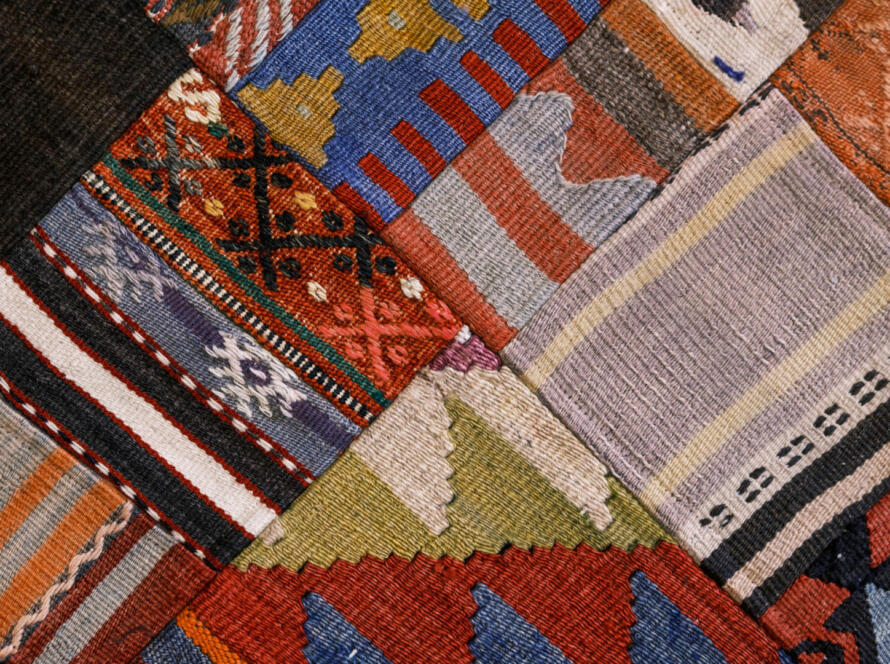When it comes to home decor, pieces like a vintage rug add character, history, and elegance to a space. Whether you’re a seasoned collector or a first-time buyer, knowing how to identify an authentic vintage rug is essential. Here’s a comprehensive guide to help you distinguish authentic vintage rugs from imitations and make a purchase you can be proud of.
Understanding Vintage Rugs
Before going into the identification process, it is crucial to understand what a vintage rug is. A typical vintage rug is one that is between 20 to 100 years old. Rugs older than 100 years fall into the antique category. Vintage rugs are often handcrafted, featuring intricate designs and high-quality materials that have stood the test of time, quite literally.
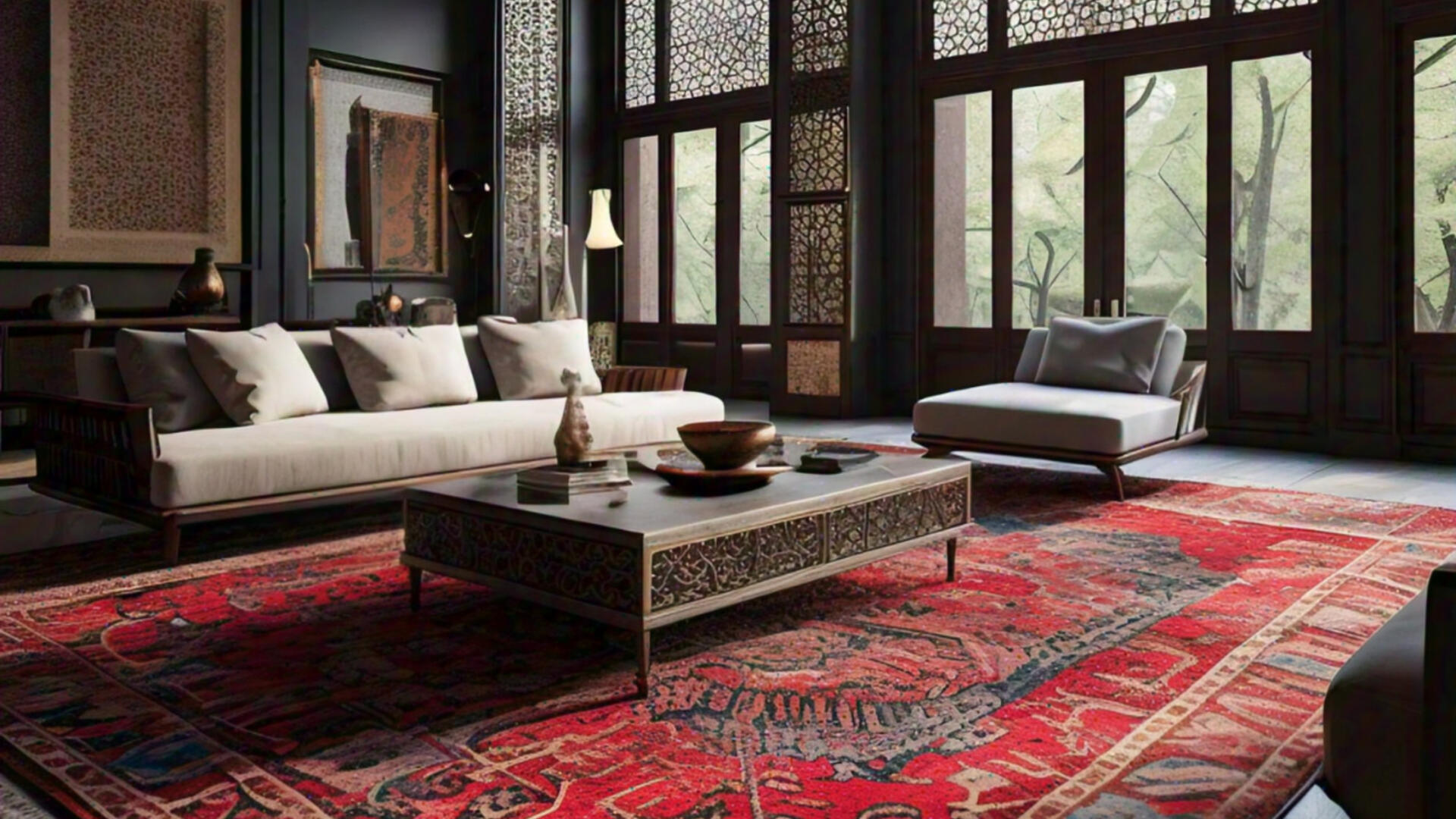
Identifying a Vintage Rug
Examine the Material
Authentic vintage rugs are usually made from natural materials like wool, silk, and cotton, or a combination of these. These materials are durable and have a distinctive feel and appearance. Wool is the most common material for vintage rugs. It is soft, resilient, and holds dye well, without getting discoloured or appearing faded even after 40 to 60 years. Genuine wool rugs have a slightly oily texture due to lanolin, which is naturally found in wool and helps repel dirt.
On the other hand, silk rugs are more delicate and have a luxurious sheen. They are often used for intricate details and feel cool to the touch. Cotton is often used for the foundation of rugs, providing strength and stability to the rug.
Imitations generally use synthetic materials like polyester or nylon, which lack the durability and rich texture of natural fibres. They not only feel different, but also lend a different aesthetic to the space.

Inspect the Weave
A significant indicator of a rug’s authenticity is the weaving technique. Hand-knotted rugs, where each knot is tied individually, are the trademark carpets of authentic vintage pieces. Here is how to identify them:
Back of the Rug
Examine the back of the rug to see if the pattern is visible. Hand-knotted rugs will have a clear and less vibrant pattern on the back, just like authentic Chikankari work with the knots and lose ends at the back
Knot Density
Measure or ask for the knots per square inch. Higher knots per square inch usually indicates finer craftsmanship and detail. Vintage rugs should ideally have 100 to 300 knots per square inch.
Machine-made rugs and duplicates will have a uniform, grid-like appearance on the back and lack the irregularities that come with hand-knotting.

Check the Dyes
Vintage rugs typically use natural dyes derived from plants, insects, and minerals. These dyes age gracefully, developing a layer that enhances the rug’s beauty over time. To distinguish natural dyes from synthetic ones, follow these methods.
Colour Variations
Look for slight variations in colour. Natural dyes often result in subtle, uneven hues, while synthetic dyes are uniformly consistent.
Colour Fastness
Gently rub a damp white cloth over a small area of the rug. Natural dyes should not bleed easily, whereas synthetic dyes might.
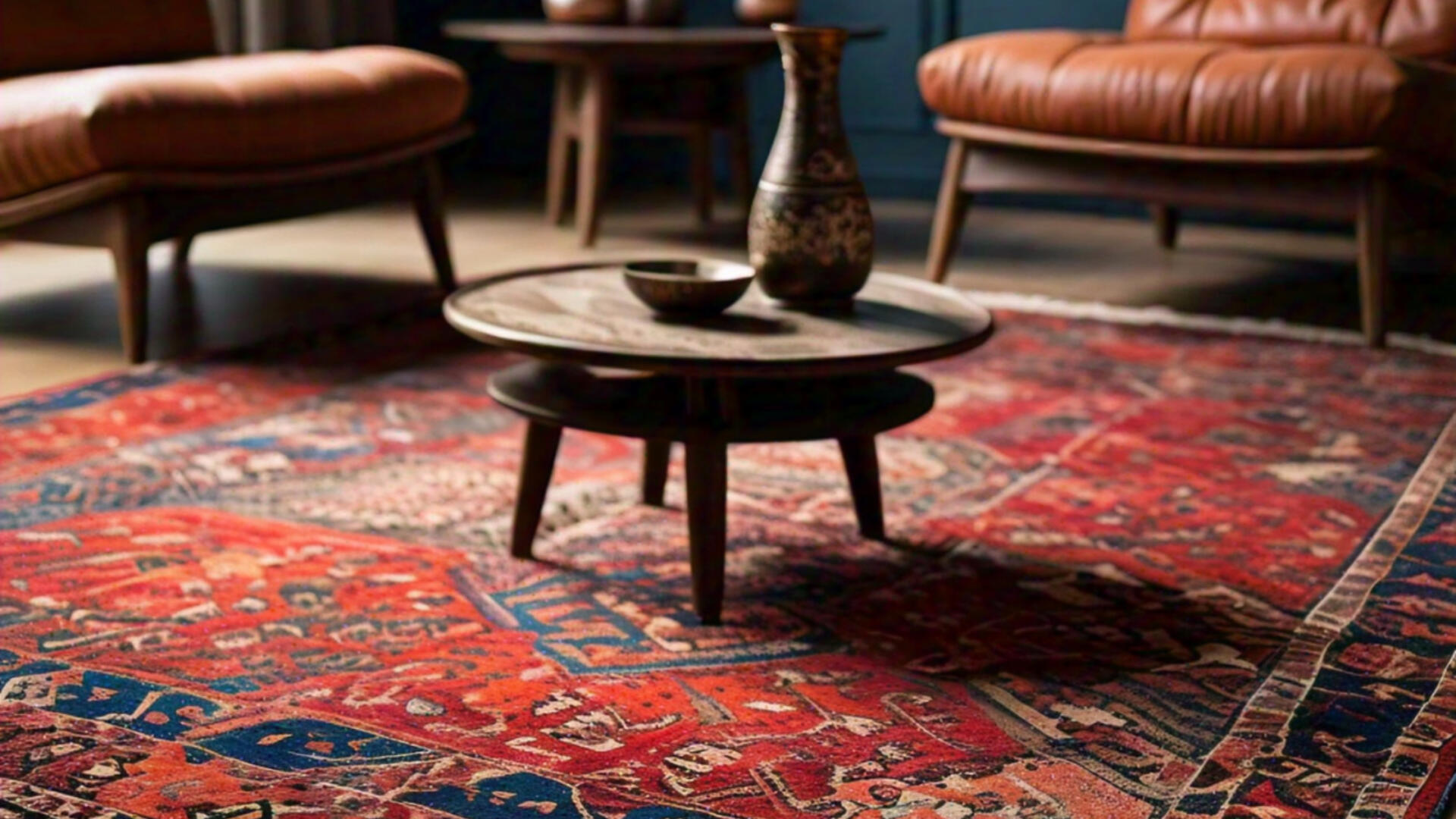
Assess the Design and Patterns
Authentic vintage rugs feature traditional designs and patterns that reflect the culture and history of their place of origin. Familiarise yourself with common patterns from different regions while looking for a vintage rug.
Persian Rugs are known for their intricate floral and medallion designs, and are some of the most sought-after vintage pieces. Turkish Rugs often feature geometric patterns and bold colours. Caucasian Rugs are characterised by tribal motifs and earthy tones.
Modern imitations may lack the complexity and authenticity of these traditional designs. They might also be more abstract and contemporary in terms of design.

Look for Signs of Age
Vintage rugs naturally show signs of ageing, which add to their charm and authenticity. Look out for such signs.
Wear and Tear
Look for uneven wear, especially in high-traffic areas. The pile may be lower in these spots.
Fading
Natural fading, especially on the edges, is common in vintage rugs.
Patina
Over time, a vintage rug develops a patina, a soft sheen that occurs naturally with age.
Be careful of mistaking rugs that appear too perfect as vintage, as they may be artificially aged or distressed to mimic the look of a vintage rug.
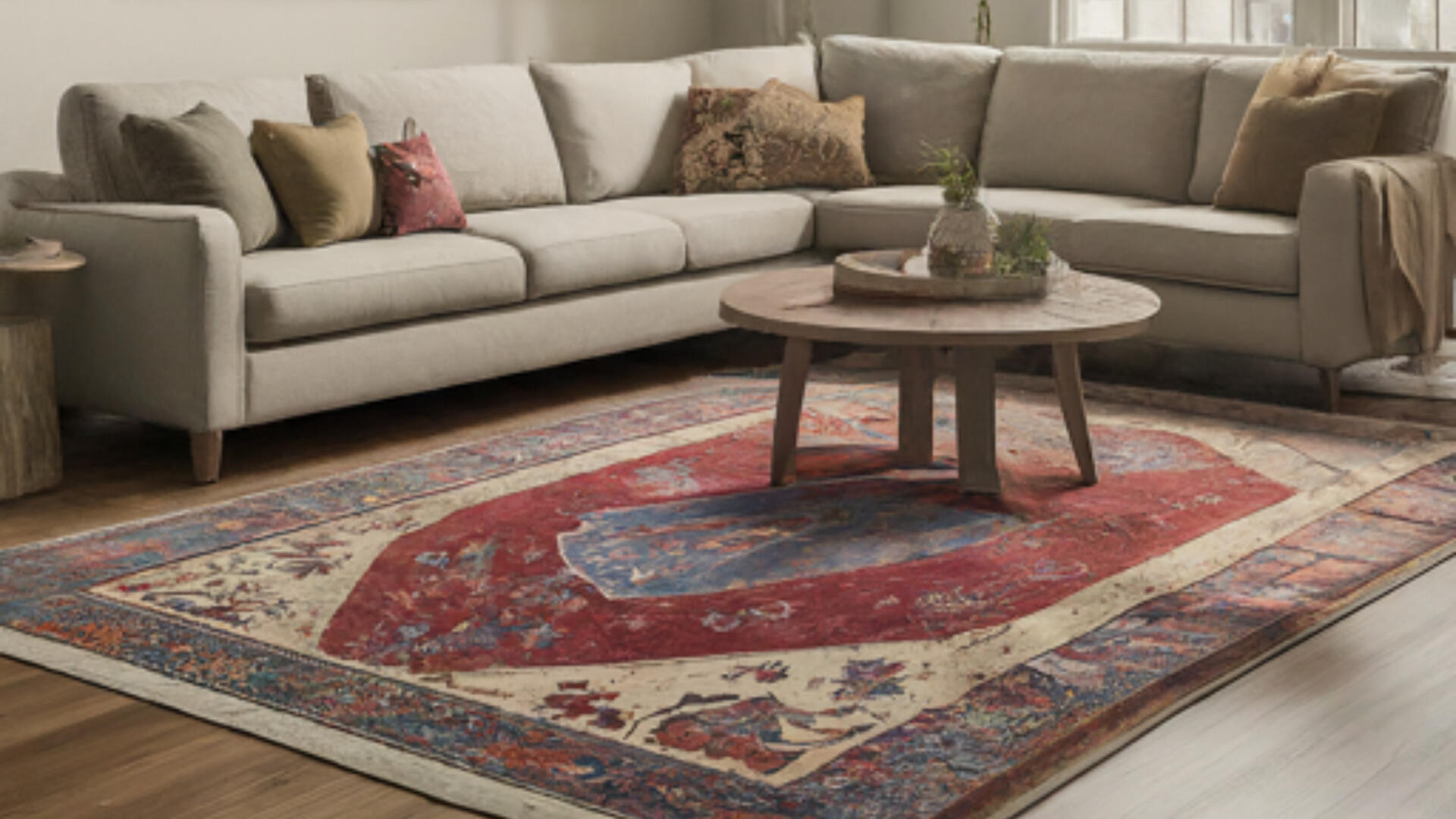
Research the Origin
Understanding the rug’s history and origin can provide valuable insights into its authenticity. Check the country of origin, different regions have unique weaving styles and materials like Persian rugs, Tibetan carpets and Chinese carpets. Verify the approximate age of the rug as well. Check the pile height throughout the carpet, if it is even, the rug is probably an imitation!
Reputable and authentic sellers will often have this information readily available.
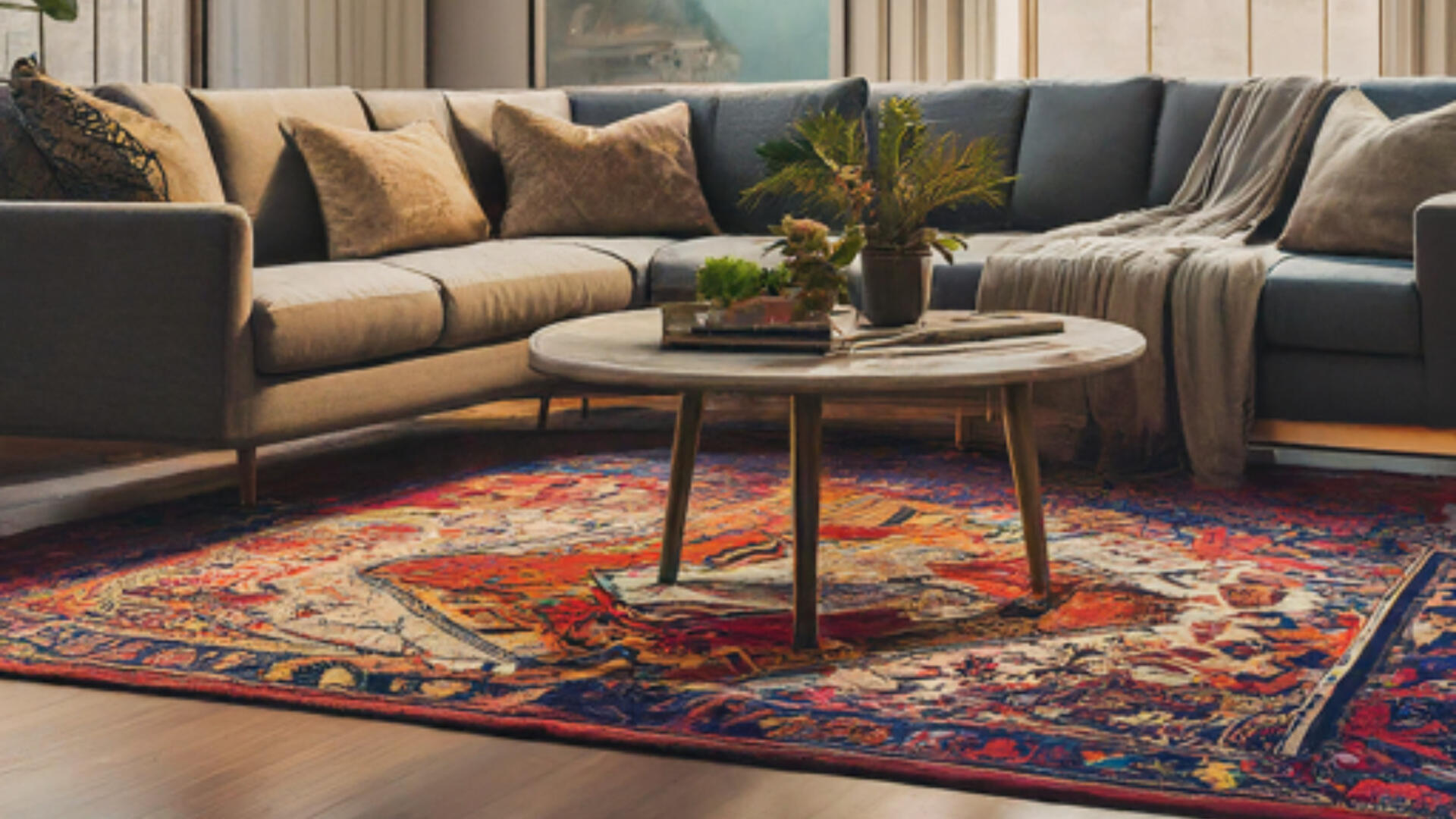
Identifying an authentic vintage rug requires a keen eye and a bit of research, but the effort is well worth it. These rugs are not just decorative pieces but are also valuable investments that carry a piece of history. By examining the material, weave, dyes, design, signs of age, and origins, and consulting experts when needed, you can confidently navigate the market and find a genuine vintage rug that will grace your home for years to come.
Frequently Asked Questions
What materials are commonly used in authentic vintage rugs?
- Authentic vintage rugs are typically made from natural materials such as wool, silk, and cotton.
- Wool is the most commonly used, known for its softness, resilience, and ability to hold dye without fading. Silk rugs are more delicate, offering a luxurious sheen and intricate details. Cotton is often used as the foundation of the rug, providing strength and stability. Imitations, on the other hand, usually use synthetic materials like polyester or nylon, which lack the durability and rich texture of natural fibres.
How can I tell if a rug is hand-knotted?
- To determine if a rug is hand-knotted, examine the back of the rug. In a hand-knotted rug, the pattern on the back will be visible, though less vibrant than on the front.
- Additionally, hand-knotted rugs will have irregularities and variations in the knotting, unlike machine-made rugs, which have a uniform, grid-like appearance on the back. You can also measure the knots per square inch- authentic vintage rugs typically have a KPSI of 100 to 300, indicating fine craftsmanship.
How do I distinguish natural dyes from synthetic dyes in a vintage rug?
- Natural dyes, derived from plants, insects, and minerals, age gracefully, developing a patina that enhances the rug’s beauty. To identify natural dyes, look for slight variations in colour, as natural dyes often produce uneven hues.
- You can also perform a simple test by gently rubbing a damp white cloth over a small area of the rug; natural dyes should not bleed easily, while synthetic dyes might.
What are the signs of age I should look for in a vintage rug?
- Authentic vintage rugs show natural signs of ageing, which add to their charm and authenticity. Look for wear and tear, especially in high-traffic areas where the pile may be lower. Fading, particularly on the edges, is common in vintage rugs.
- Additionally, a soft sheen known as patina often develops over time. Be cautious of rugs that appear too perfect, as they may have been artificially aged to mimic the look of a vintage rug.
Why is the rug’s origin important in determining its authenticity?
- The origin of a rug can provide valuable insights into its authenticity, as different regions have unique weaving styles, patterns, and materials.
- For instance, Persian rugs are known for their intricate floral designs, Turkish rugs for their bold geometric patterns, and Caucasian rugs for their tribal motifs. Understanding the rug’s history and place of origin helps ensure you’re investing in a genuine vintage piece. Reputable sellers should have this information readily available.


